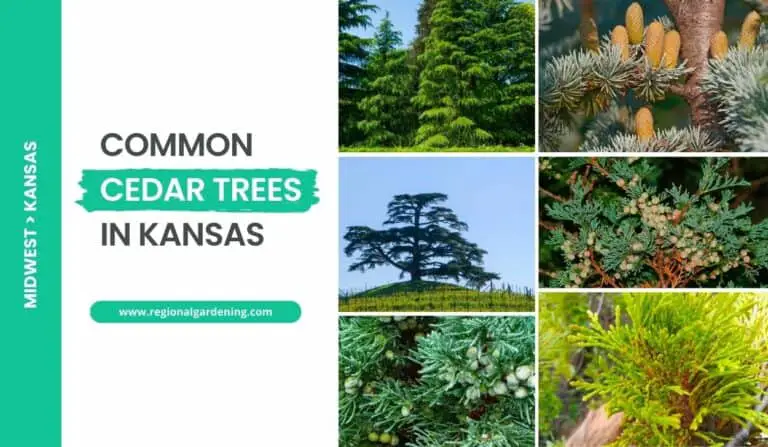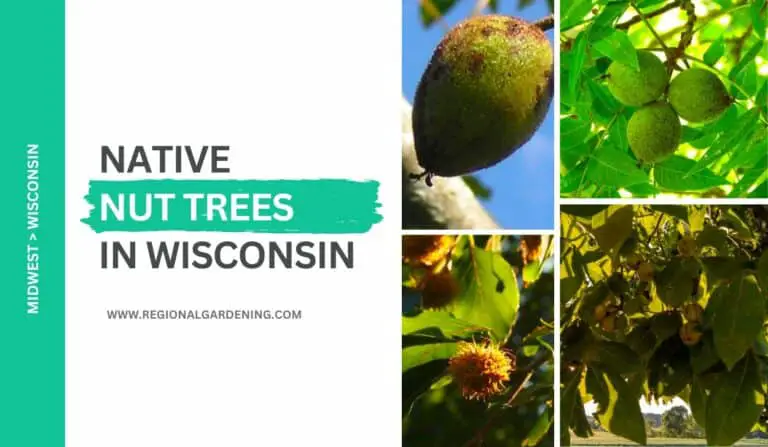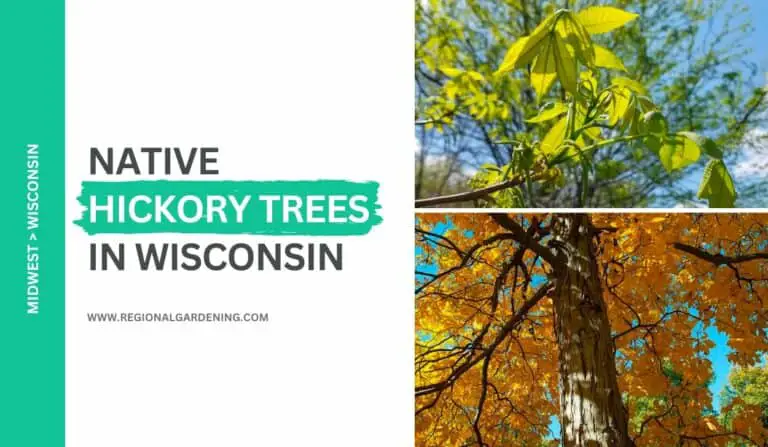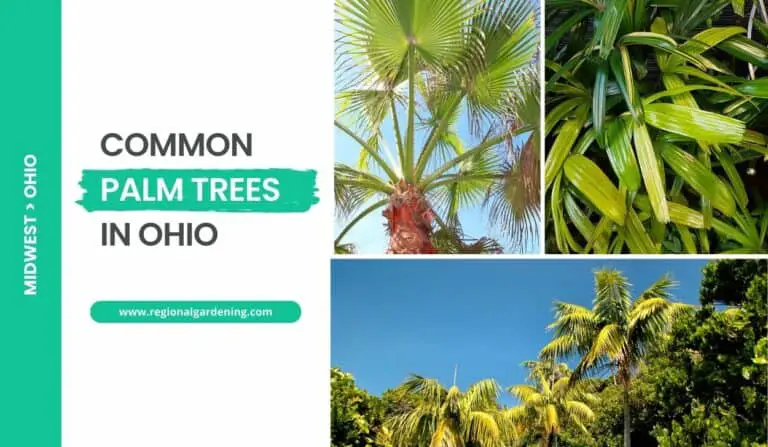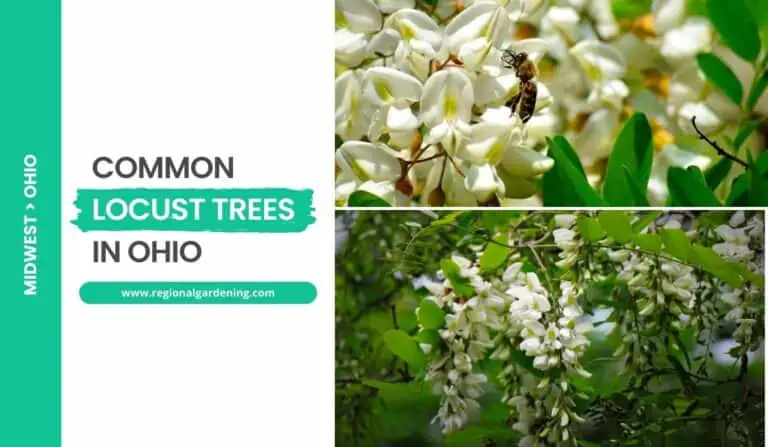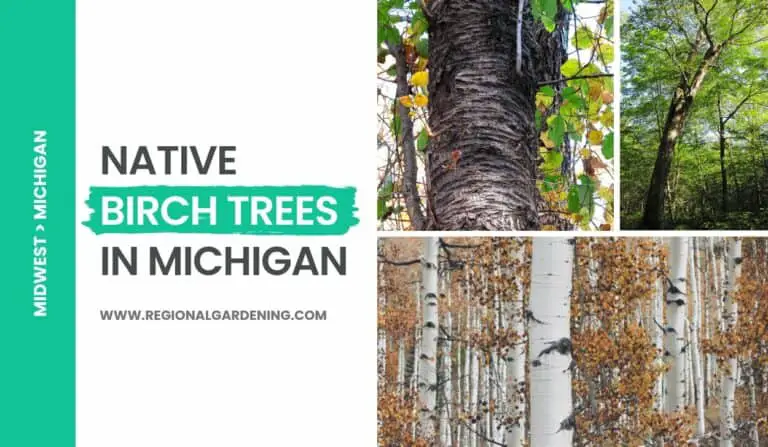2 Native Locust Trees In Wisconsin (Photos & Identification)
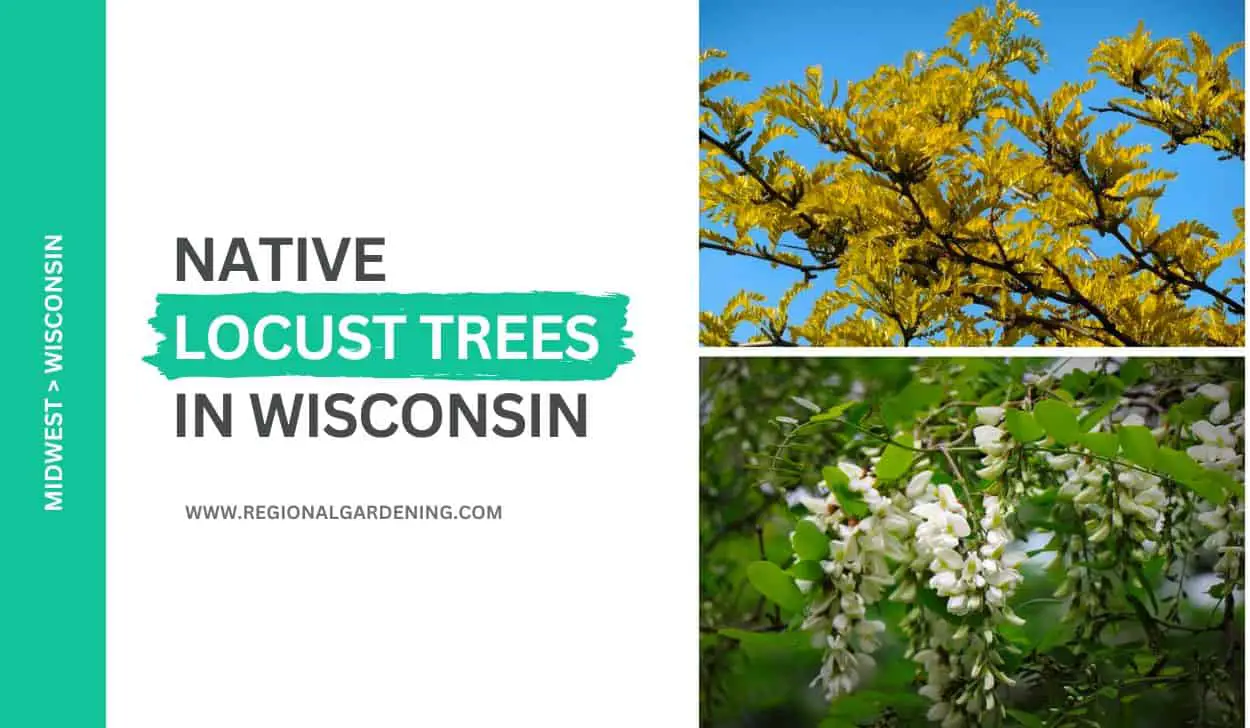
Locust trees are one of the least discussed tree species among gardeners and tree enthusiasts. If you live in Wisconsin and are interested in learning about the native varieties that thrive in your state, this is the place to be.
There is a wide variety of native flora that adorns Wisconsin’s natural landscapes, and two remarkable locust trees stand out among them.
In this article, we’ll take a closer look at these two native locust trees in Wisconsin, exploring their native habitats, physical characteristics, and the numerous ways in which they are used.
So, let’s get started.
1. Honey Locust
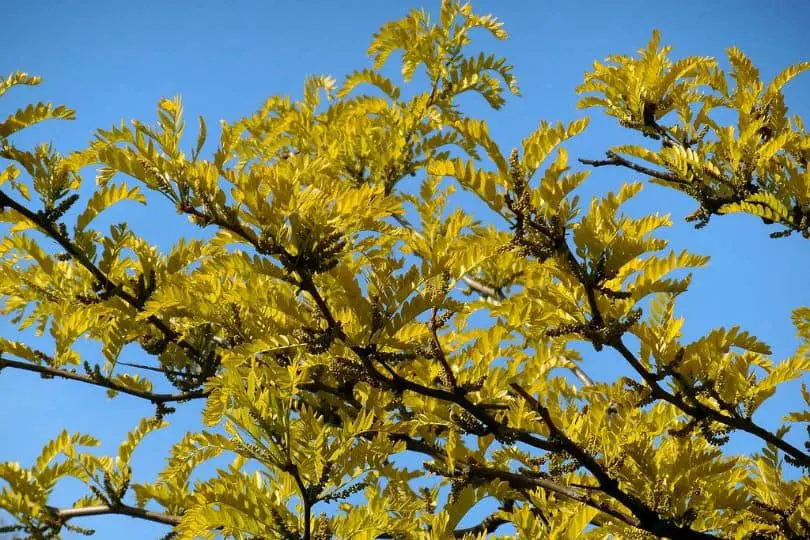
- Common Name: Honey Locust
- Scientific Name: Gleditsia triacanthos
- Mature Height: 30 to 50 feet
- Native/Non-Native: Native only to southwestern Wisconsin
- Flowers/Cones: Produces a legume fruit that is 10 to 18 inches long.
- Uses: Wood is used for fencing, fuel, and cross ties. Also for windbreaks and ornamentals.
The Honey Locust is a lovely tree that can reach heights of 30 to 50 feet. It has slender, spreading, and slightly pendulous branches that produce a large, open, and rather flat crown.
Old trees have dark gray or brown bark that splits into strips. This tree has compound as well as doubly complex leaves. The type 1 leaf has 18 to 28 leaflets, whereas the type 2 leaf has 4 to 7 leaflets that are 6 to 8 inches long. Each leaflet has between 16 and 24 supplementary leaflets.
The Honey Locust produces a flat, dark brown or black legume fruit in the fall. As the seeds mature, the pod often twists. The seeds are tough and separated from one another by pulp.
The Honey Locust is only found in southwestern Wisconsin, yet it thrives on fertile, well-drained soil. It is frequently discovered in fertile, damp river bottoms.
Honey Locust wood is a reddish-brown heartwood that is coarse-grained, robust, and sturdy. However, when in contact with the ground, it is not very durable.
2. Black Locust
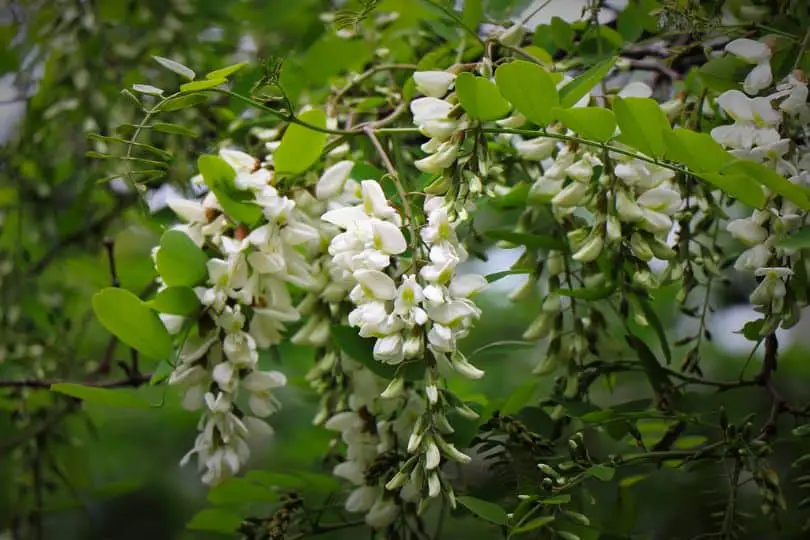
- Common Name: Black Locust
- Scientific Name: Robinia pseudoacacia
- Mature Height: 30 to 50 feet high
- Native/Non-Native: Non-Native
- Flowers/Cones: Fragrant, white flowers in the spring
- Uses: Fence posts and firewood
The Black Locust is a medium-sized tree that can reach heights of 50 feet. It has an open crown with low branches and twigs and branchlets with thick, sharp spines. The bark is dark with a yellow or orange inner bark that is highly furrowed and forms a pattern of fibrous ridges.
The Black Locust’s leaves are alternating and complex, with 7 to 19 oblong, thin leaflets. It has a 3 to 5-inch long legume fruit with 4 to 8 little, hard seeds that ripen late in the fall and remain on the tree throughout the winter.
Although Black Locust is not a native tree to the state, it has been widely planted since it grows well in a variety of soils. It was originally planted to control soil erosion, which it excels at. However, because of its ability to grow rapidly through suckering, it is commonly regarded as a weed.
Black Locust has fragrant, white blossoms in the spring, making it quite beautiful. Its wood is yellow, close-grained, hefty, and robust, making it sturdy and resilient when in touch with the soil. It has potential value, but due to locust borer attacks, it rarely grows to log size, restricting its utility to fence posts and firewood.
Native Locust Trees In Wisconsin – Frequently Asked Questions (FAQs)
Let’s take a look at some of the most frequently asked questions related to native and common locust trees in Wisconsin.
Do locust trees grow in Wisconsin?
Yes, locust trees can grow in Wisconsin. Specifically, the black locust tree and honey locust trees are known to thrive in various parts of Wisconsin. They are deciduous trees native to North America and are well-suited to the climate of the state.
Black locust trees are known for their fragrant white flowers that bloom in late spring or early summer, as well as their hard, durable wood. They can be found in both urban and rural areas throughout Wisconsin.
Is honey locust trees native to Wisconsin?
The honey locust trees are native to Wisconsin, but their population is very low compared to the central and eastern United States. Because of their attractive appearance and tolerance to a wide range of soil conditions, they are frequently used as ornamental trees throughout the state.
Honey locust trees are distinguished by their fern-like leaves and thorny branches. They are commonly found in parks, gardens, and urban landscapes in Wisconsin.
Which region has the most locust trees in Wisconsin?
Locust trees, particularly black locust trees (Robinia pseudoacacia), can be found throughout Wisconsin. However, determining a specific region with the most locust trees is difficult because their distribution is dispersed and dependent on a variety of factors, such as local planting preferences and land usage. Black locust trees can be found in both urban and rural areas throughout the state. They are frequently planted for their ornamental value, erosion control, and timber production.
What are the uses of locust trees in Wisconsin?
Locust trees have a wide range of applications in Wisconsin. Because of their attractive appearance, they are a popular choice for landscaping, providing shade, and improving the visual appeal of gardens and parks. Aside from its beauty, its strong and durable wood is highly valued for practical purposes. Because of its rot-resistant properties, locust wood is ideal for making fence posts, outdoor furniture, and decking that can withstand Wisconsin’s varied weather conditions.
Because of their extensive root systems, these trees also play an important role in environmental conservation by preventing soil erosion. Their fragrant blooms attract bees and other pollinators, which benefits the local ecosystem.
Furthermore, locust trees provide shelter and food for wildlife, contributing to Wisconsin’s overall ecological diversity.
Similar Articles
- Native Aspen Trees In Wisconsin
- Native Ash Trees In Wisconsin
- Native Oak Trees In Wisconsin
- Native Pine Trees In Wisconsin
- Native Spruce Trees In Wisconsin
- Native Cedar Trees In Wisconsin
- Native Birch Trees In Wisconsin
- Native Maple Trees In Wisconsin
- Native Hickory Trees In Wisconsin
- Native Elm Trees In Wisconsin
- Native Cherry Trees In Wisconsin
- Native Nut Trees In Wisconsin
Sources
The Regional Gardening team makes sure that the information in our articles is accurate by only using sources that are known to be trustworthy. Some of these sources are peer-reviewed journals from government agencies, well-known universities, and scientific research organizations.
- Trees Of Ohio, Division Of Wildlife
- Trees Of Ohio Field Guide, Book by Stan Tekiela
- Ohio Trees, OSU Extension Publications
- Native Plant Lists, Ohio Department Of Natural Resources
- Ohio Department Of Agriculture
- Gardening, The Ohio State University


